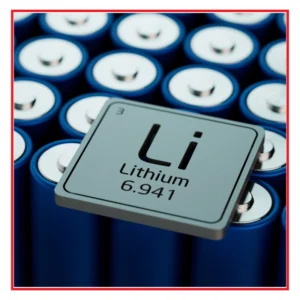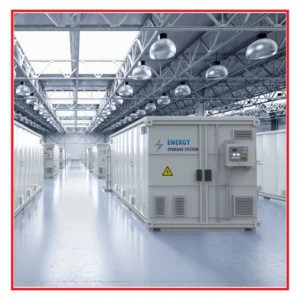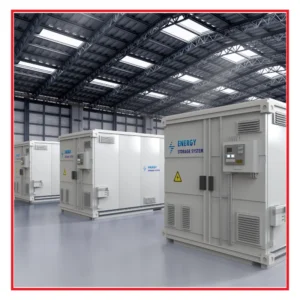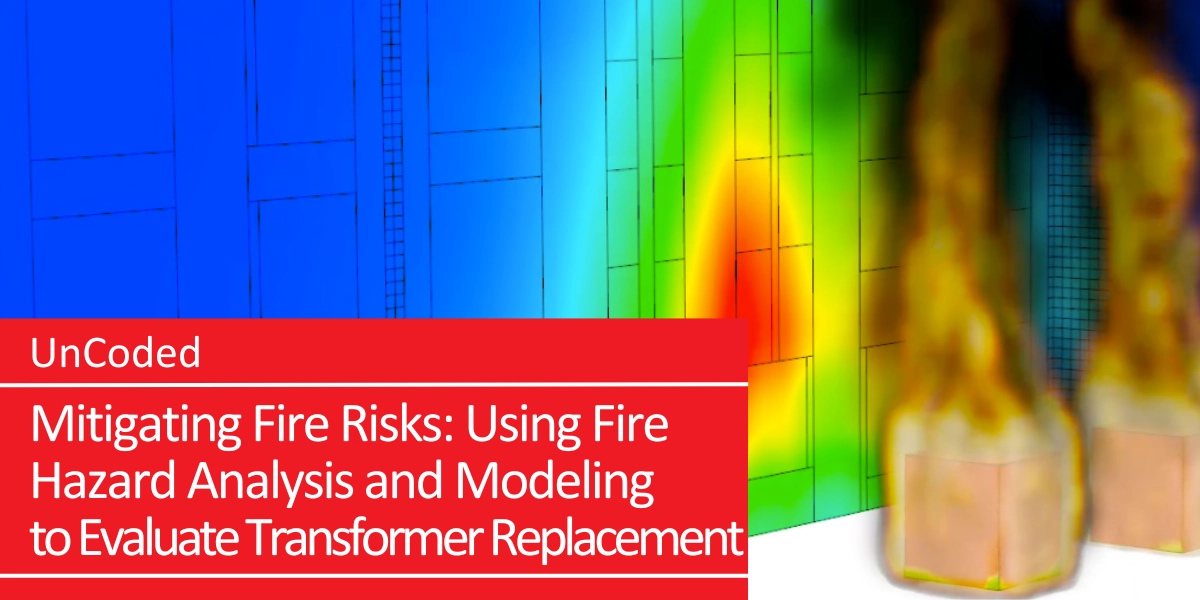Battery and Energy Storage System Codes and Standards: What You Need To Know
About This Project
Battery and Energy Storage System Codes and Standards: What You Need To Know
Learn key fire and life safety codes and standards for battery energy storage systems, including NFPA 855, UL 9540, UL 9540A, and FM Global guidance
By Joseph Chacon, PE, TERPconsulting
With the rapid growth of renewable energy and the push toward electrification, Battery Energy Storage Systems (BESS) have become a critical component of modern infrastructure. However, storing and managing energy—especially lithium-ion batteries (LIBs)—presents unique fire and life safety challenges. To mitigate risks, a range of codes and standards guide the design, installation, operation, and testing of energy storage systems.
Whether you are an engineer, AHJ, facility manager, or project developer, TERPconsulting’s BESS expert Joseph Chacon, PE, will outline the key codes and standards for optimal BESS compliance and safety in this article.
OVERALL INSTALLATION CODES AND STANDARDS
International Fire Code (IFC) & NFPA 1–Fire Code
Most U.S. jurisdictions adopt one of these fire codes. Both include provisions specific to battery energy storage systems and lithium-ion battery storage. Some jurisdictions may also amend the base code with stricter requirements, making local adoption an important factor in project planning.
NFPA 855–Standard for the Installation of Stationary Energy Storage Systems
Referenced in both the IFC and NFPA 1, NFPA 855 is the cornerstone standard for ESS. It establishes requirements for design, construction, installation, commissioning, operation, maintenance, and decommissioning of ESS, including lithium-ion storage.
NFPA 68 and NFPA 69–Explosion Protection and Prevention Standards
When explosion risks exist, these standards provide guidance on deflagration venting (NFPA 68) and explosion prevention systems (NFPA 69). They ensure facilities can safely manage or prevent overpressure events.
NEC – National Electrical Code (NFPA 70)
The NEC addresses hazards associated with electrical installations, ensuring that ESS systems are wired and installed to minimize the risk of fire or shock hazards.
NFPA 800–Battery Safety Code (in development)
Although not yet published, this forthcoming standard aims to address safety concerns across the entire battery life cycle—from raw material sourcing and manufacturing to use, storage, and disposal.
PERFORMANCE TESTING STANDARDS
UL 9540A – Test Method for Evaluating Thermal Runaway Fire Propagation in BESS
UL 9540A provides large-scale fire and propagation testing for energy storage systems. Importantly, this standard is not a listing and does not assign pass/fail criteria. Instead, the data generated is critical for engineers and AHJs to determine spacing, fire protection, and system design.
 QUALIFICATION AND CERTIFICATION STANDARDS
QUALIFICATION AND CERTIFICATION STANDARDS
UL 9540 – Energy Storage Systems and Equipment
A widely adopted safety standard that evaluates the overall safety and performance of energy storage systems. Both the IFC and NFPA 855 require ESS to be listed and labeled in accordance with UL 9540.
UL 1642 – Lithium Batteries
UL 1642 covers lithium cells for a variety of applications. This standard focuses on safety at the cell level, including protections against short circuiting, overheating, and fire.
UL 1973 – Batteries for Stationary, Vehicle Auxiliary Power, and Light Electric Rail (LER) Applications
While UL 1642 governs individual cells, UL 1973 applies to battery packs for stationary and auxiliary power systems. It ensures packs meet stringent performance and safety standards in operational environments.
OTHER NOTABLE STANDARDS AND GUIDELINES
FM Global 7-112 – Lithium-Ion Battery Manufacturing and Storage
This Factory Mutual (FM) Data Sheet provides loss prevention recommendations for manufacturing, assembly, and storage facilities. It includes valuable fire sprinkler design criteria for LIB storage, since lithium-ion batteries are currently outside the scope of NFPA 13–Standard for the Installation of Sprinkler Systems. While not an adopted standard, FM 7-112 is frequently referenced by stakeholders for supplemental guidance.
FM Global 5-33 – Lithium-Ion Battery Energy Storage Systems
This FM Data Sheet offers recommendations for design, operation, inspection, maintenance, and fire protection of LIB-ESS facilities. Although developed for FM-insured facilities, FM 5-33 is often applied industry-wide because it is based on full-scale testing and loss experience.
WHY THESE STANDARDS MATTER
Battery energy storage systems are advancing quickly, but so are the fire and life safety challenges associated with them. Lithium-ion batteries can pose risks of thermal runaway, fire propagation, and even explosion if not properly designed, installed, and maintained.
Compliance with IFC, NFPA 1, NFPA 855, UL 9540, and related standards ensures that energy storage systems are safe for occupants, first responders, and surrounding communities. As new codes emerge—such as the upcoming NFPA 800–Battery Safety Code—project teams should stay proactive in adapting to evolving requirements.
Let’s do a quick review of what’s been covered with some FAQs.
Do battery energy storage systems need to comply with NFPA 855?
Yes. NFPA 855 is the primary installation standard for stationary energy storage systems and is referenced by both the International Fire Code (IFC) and NFPA 1.
What is the difference between UL 9540 and UL 9540A?
UL 9540 is a safety listing standard for complete energy storage systems. UL 9540A is a test method that evaluates thermal runaway and fire propagation but does not assign a pass/fail rating.
Are lithium-ion batteries covered under NFPA 13 sprinkler design requirements?
Not directly. Lithium-ion batteries are outside the scope of NFPA 13. Guidance for fire sprinkler protection is often taken from FM Global Data Sheet 7-112.
What role does the NEC play in battery energy storage system design?
The National Electrical Code (NEC) ensures safe electrical installation and helps mitigate hazards such as short circuits, overcurrent, and shock.
Is NFPA 800 in effect yet?
No. NFPA 800, the forthcoming Battery Safety Code, is still under development but will eventually address hazards across the entire battery life cycle.
The rapid expansion of renewable energy and electrification means that energy storage safety has never been more important. Successful BESS projects require navigating a complex landscape of codes, standards, and testing requirements to ensure compliance and mitigate risk.
By understanding and applying the correct standards—ranging from installation requirements (NFPA 855, IFC, NEC) to performance testing (UL 9540A) and loss prevention guidance (FM Global)—stakeholders can deliver safe, code-compliant systems that advance energy goals without compromising life safety.
If you have a question about Battery and Energy Storage System Codes and Standards, please reach out to Joe.








